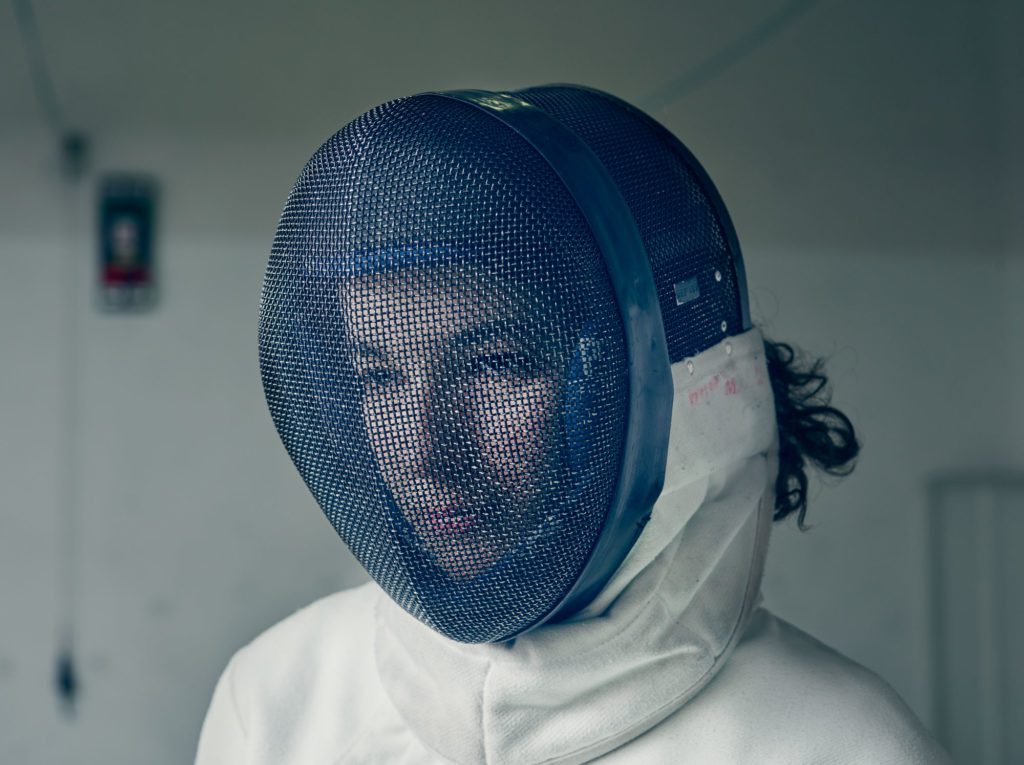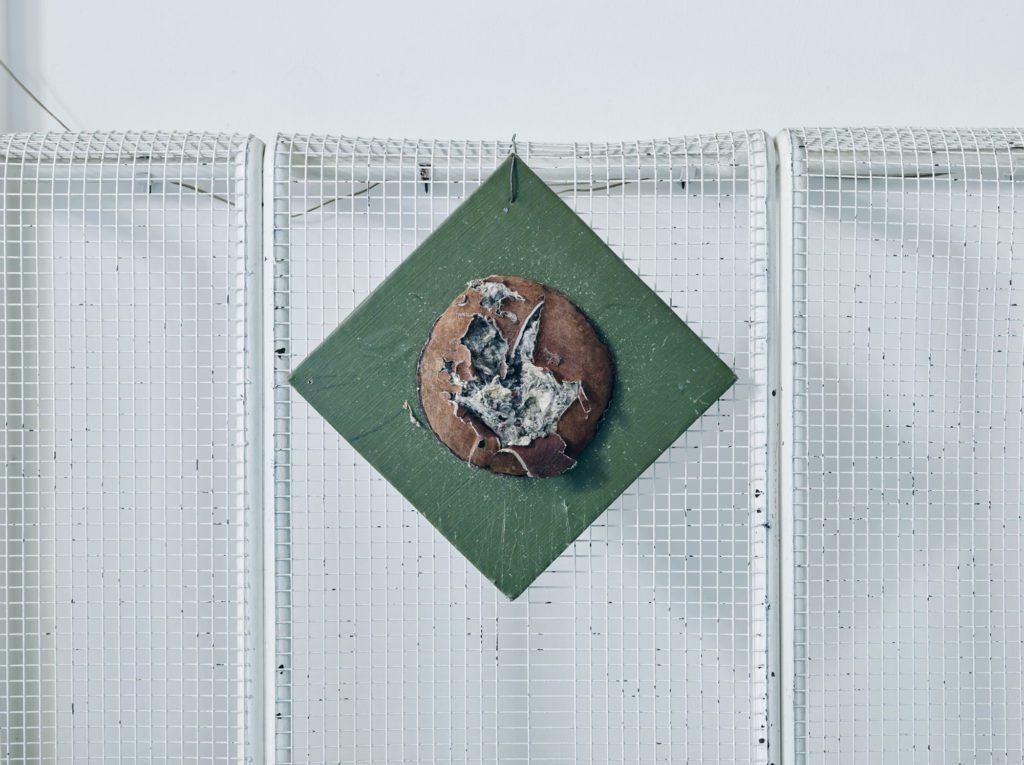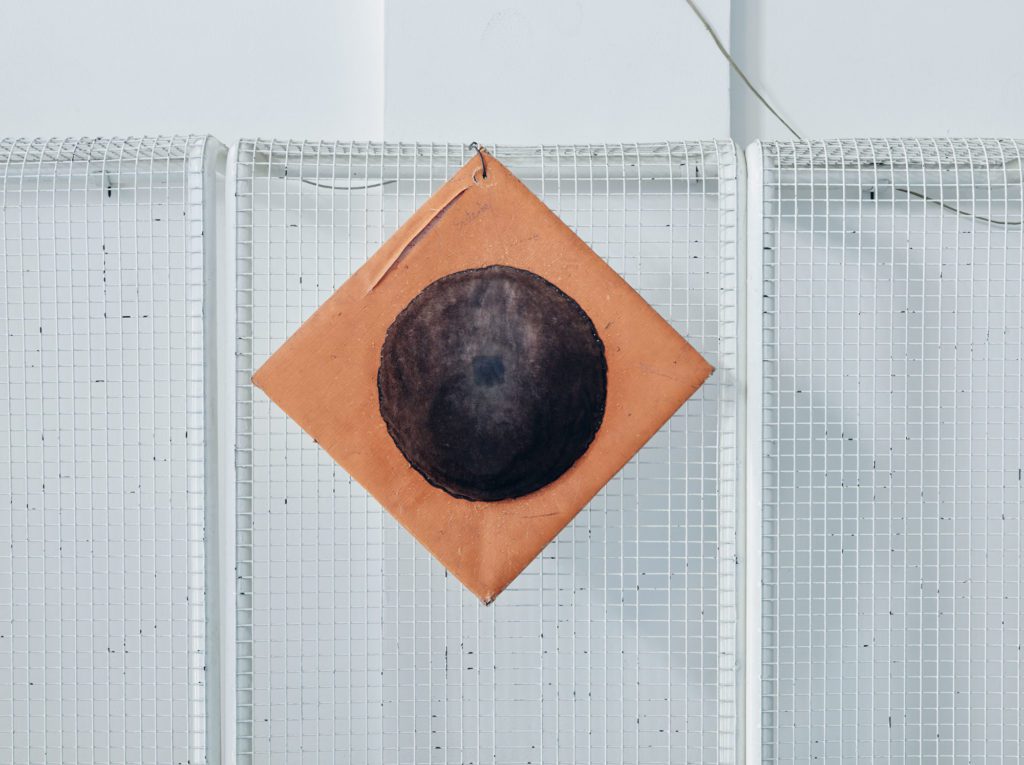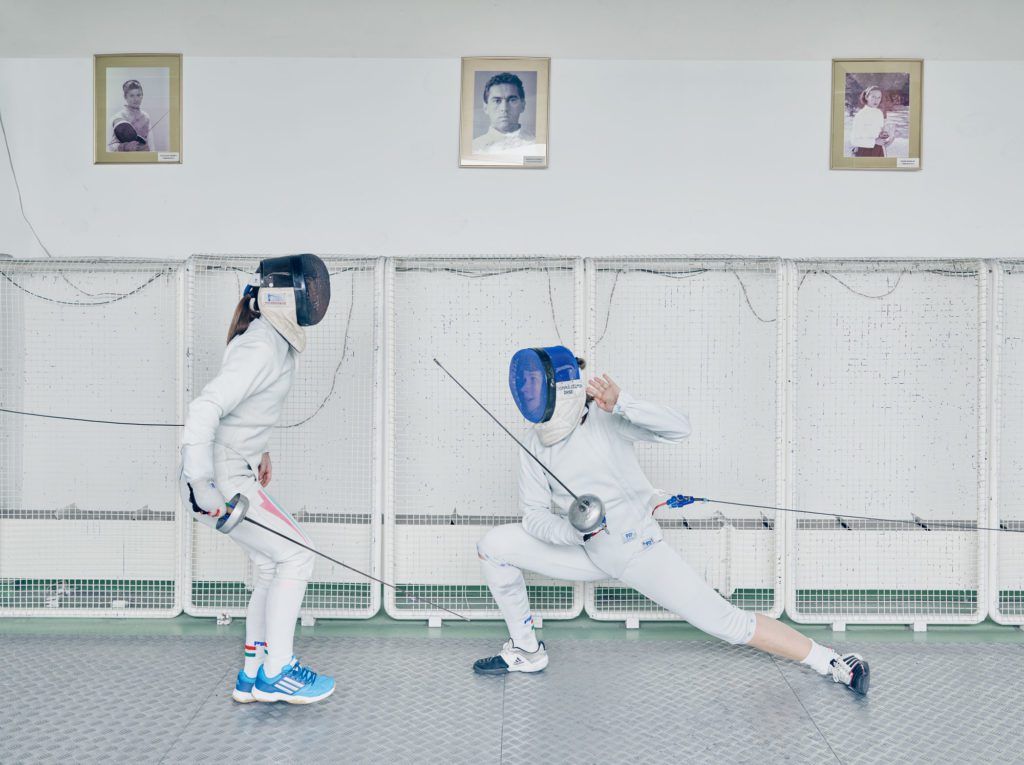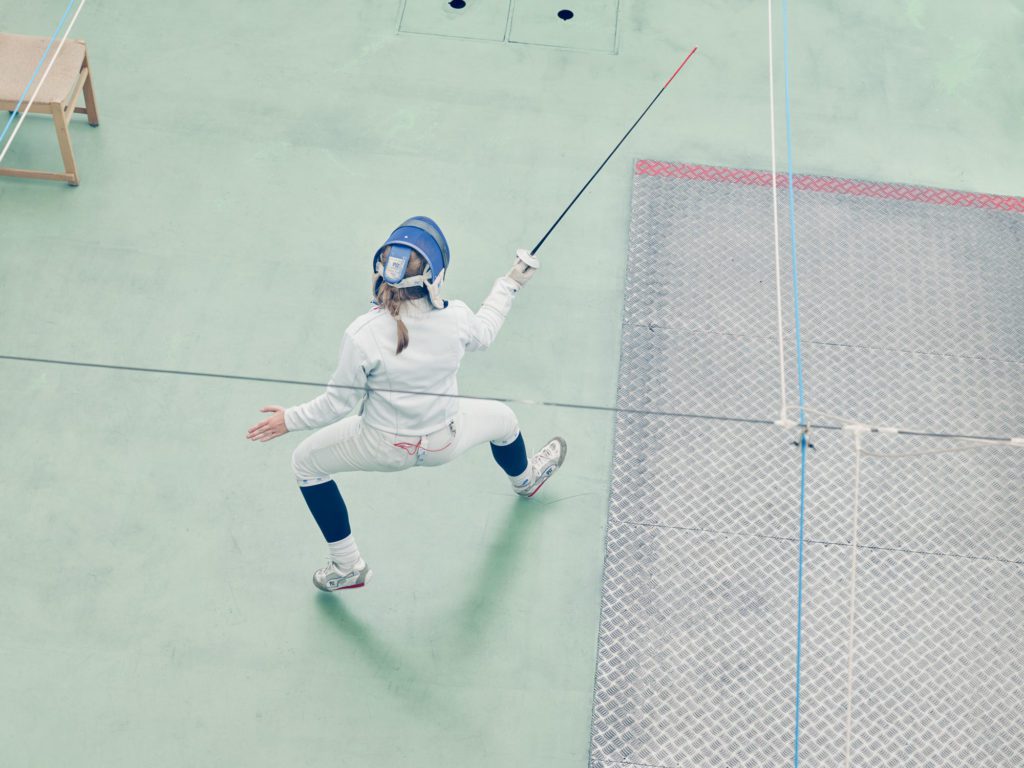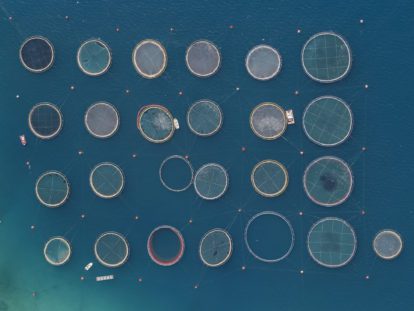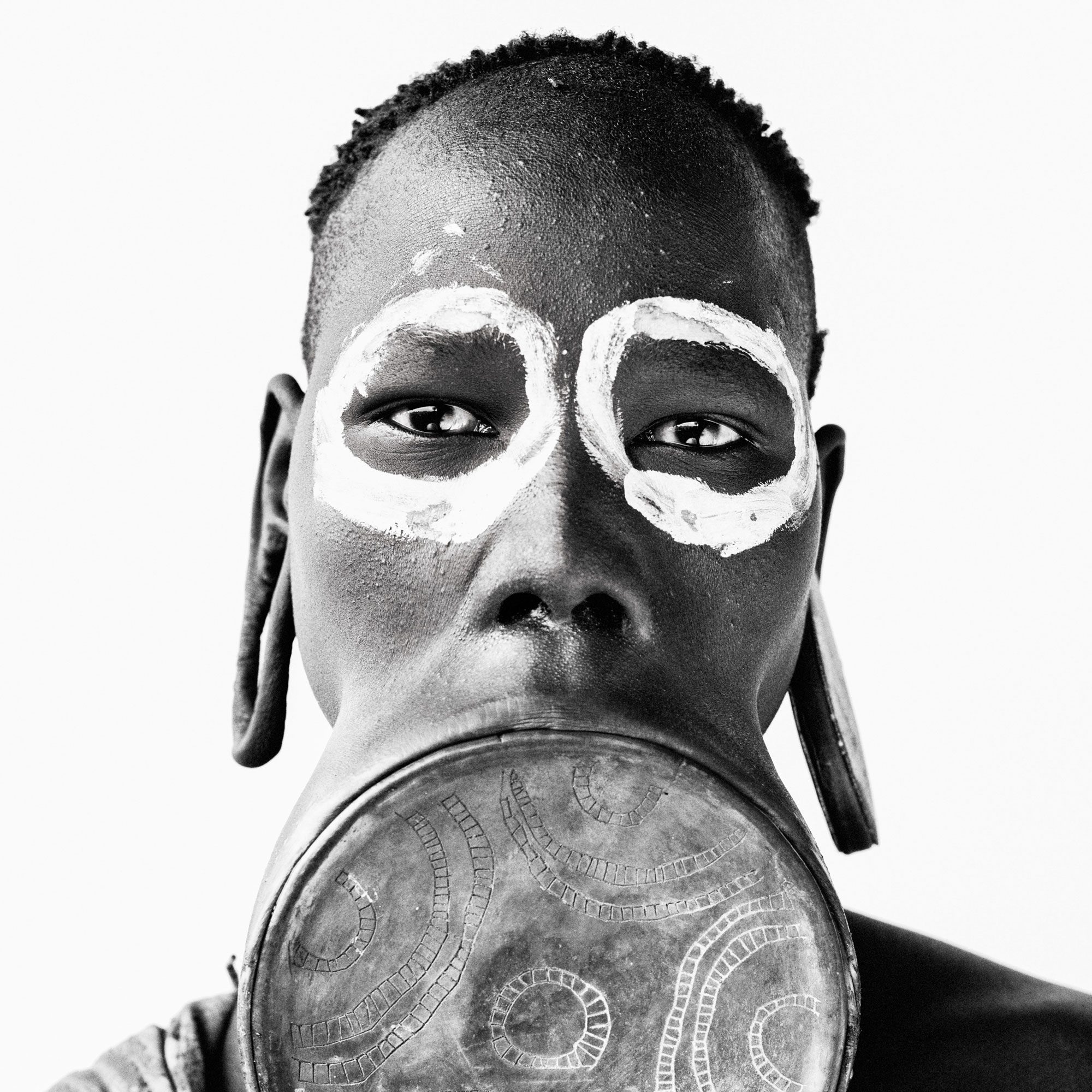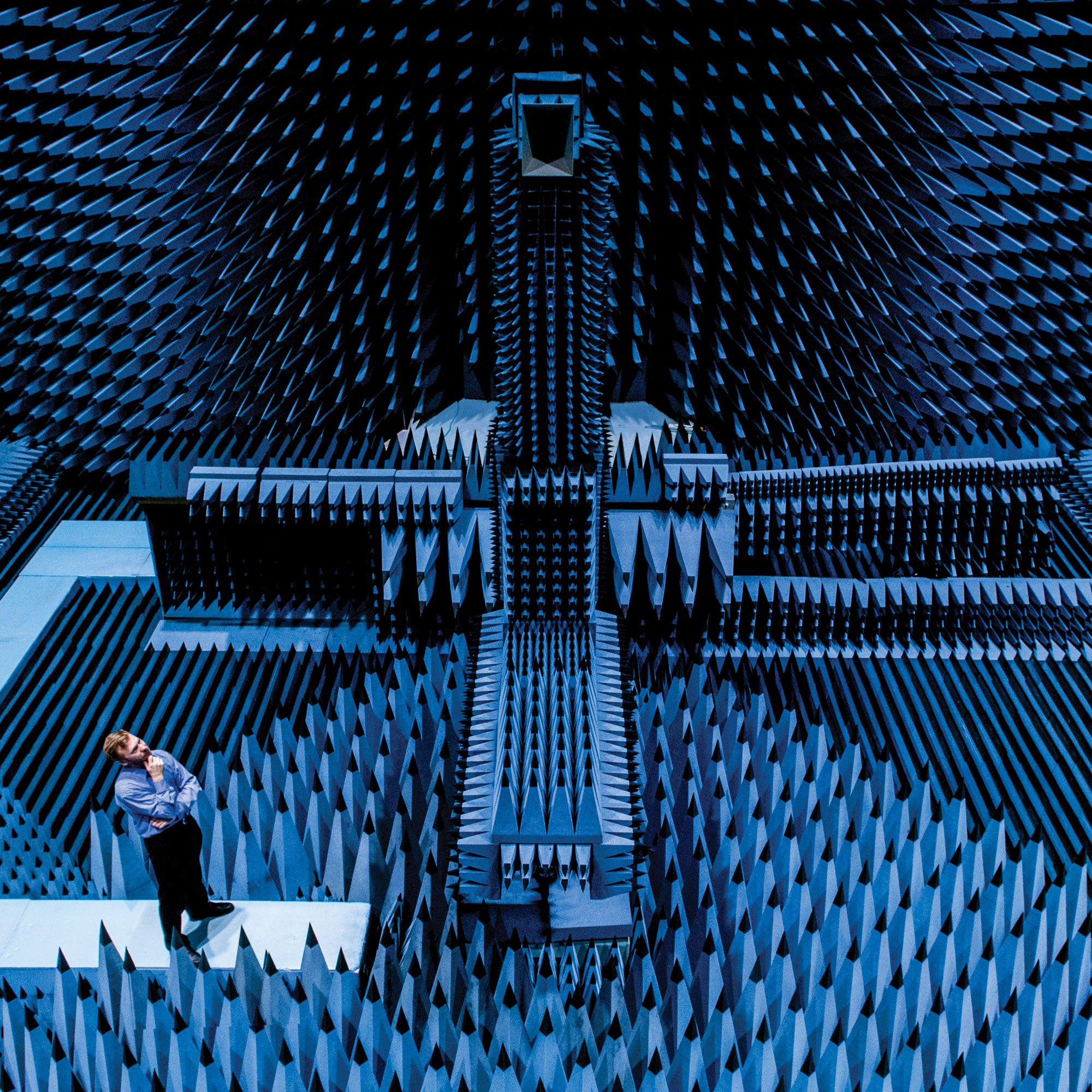The Honved Fencing Club in Budapest comes to life as soon as the clock strikes four – instantly transformed with the banter of youth, as 50 kids aged between six and 16 arrive for their daily training. Bags and coats are thrown on every available surface; boys kick a football around while the girls sit gossiping and laughing until the coach arrives. Seconds earlier the converted synagogue was so quiet you could hear a pin drop: the only sign of activity came from the armoury, where hours of sword maintenance are carried out, from which the low hum of a local radio station could be heard.
The club is home to an extraordinary fencing legacy, with an impressive number of female fencing champions. Their portraits line the hallways and their trophies are stacked high in dusty cabinets. Honved has a keen focus on developing young fencing cadets, and fencers journey from around the globe to train with the coaches at the club.
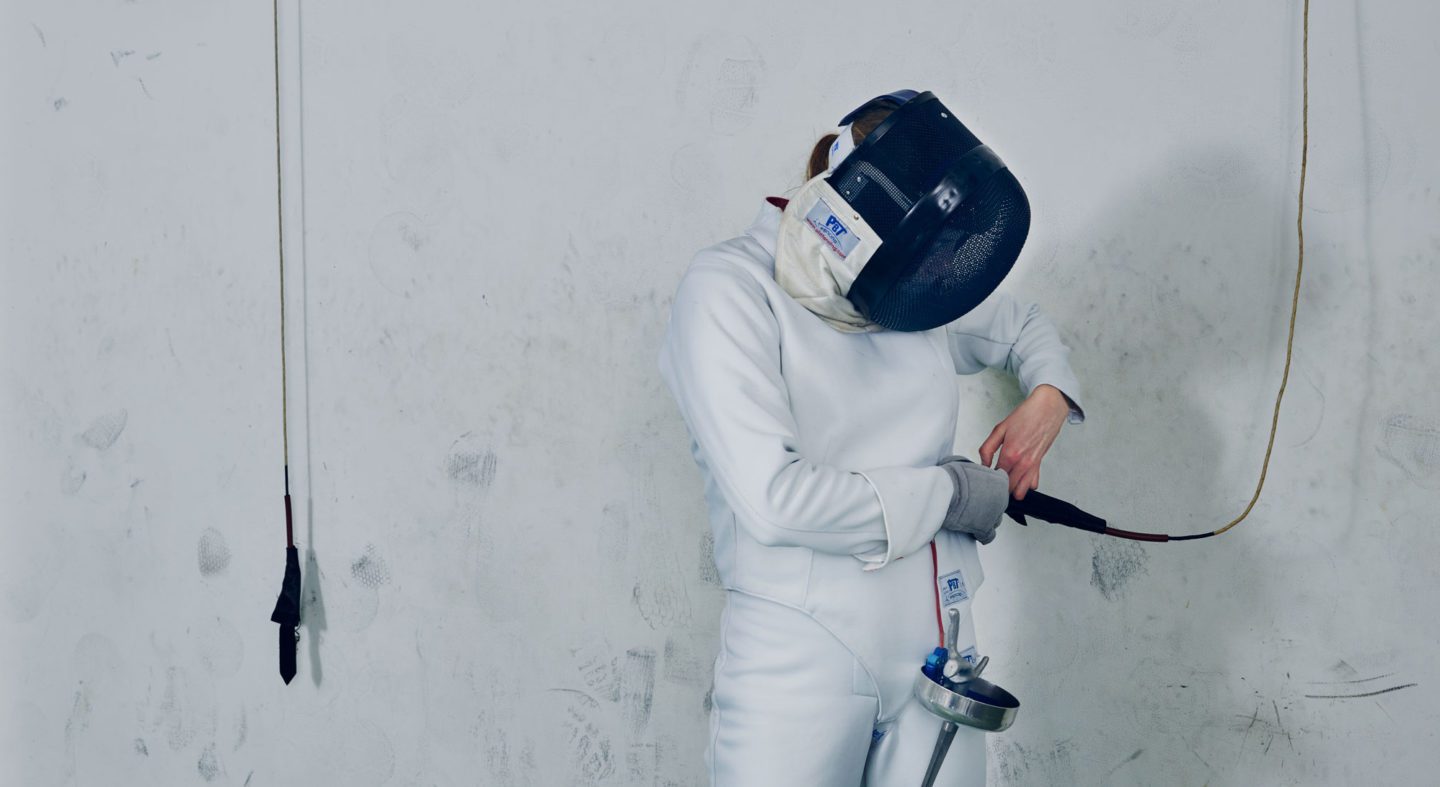
Dóri Börcsök, a young cadet preparing for training
Women’s fencing has had a complicated history; held back by traditionalists who believed the sport to be too dangerous for them, they gradually gained equality over the last century. They were prohibited from competing in all three areas of the Olympic sport until recently: foil, 1924; épée, 1996; and the sabre in 2004.
As we watch the warm-up, boys and girls run in circles, segregating themselves by gender – adolescent, self-conscious, awkward and nervously giggling if they accidently bump into each other. They stop to change into their uniforms and the focus shifts; their identities are stripped away, no cues to reveal their gender apart from the odd sweep of a ponytail from behind a mask. The awkwardness of youth replaced with grace and poise.
There are few opportunities for young boys and girls to go head-to-head without gender bias. The daily training affords such a luxury. Watching accomplished female cadets dominate their male counterparts with ease is an encouraging sign for the future of women’s fencing.
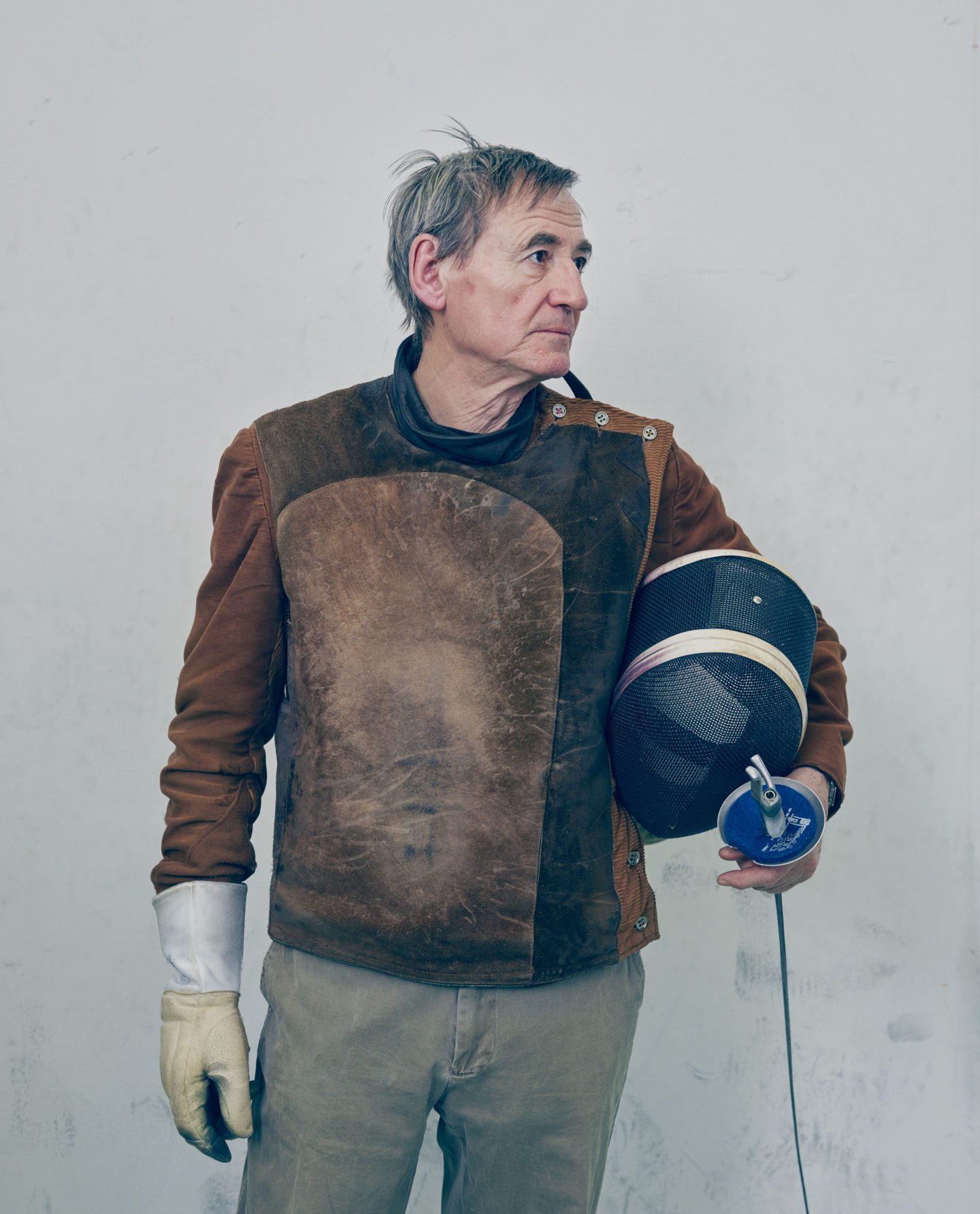
Béla Gyarmati competed in the team foil event for Hungary in the 1964 Summer Olympics. After a long period training fencers in Italy, he returned to Hungary to train the next generation of young talent.
While the uniform removes identification, the occasional overly dramatic adolescent sigh can be heard from a losing player, as they get hustled along the fencing strip – quickly reminding the viewer that these cadets are at a complex stage of development in their lives, transitioning from girls to young women. When the play reaches its conclusion, masks are lifted to reveal a combination of sweat and determination. This reveal perfectly encapsulates the duality of these highly capable fighters.

